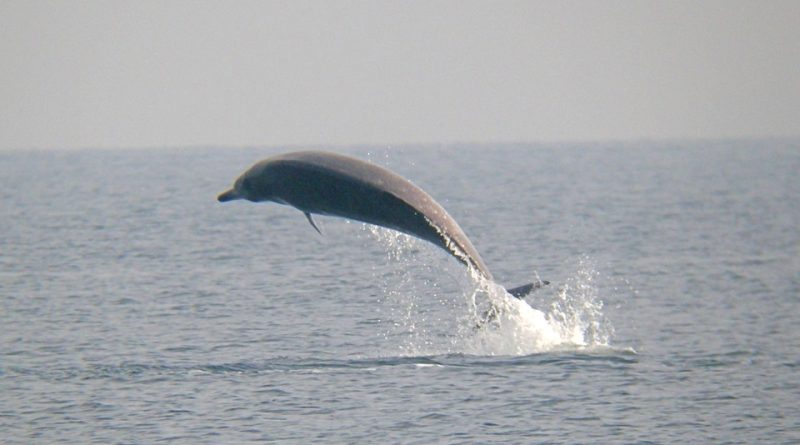Mesoplodon bidens
Mesoplodon bidens
The Sowerby’s beaked whale (Mesoplodon bidens, Sowerby, 1804) is a cetacean belonging to the Ziphiidae family.
Systematic –
From a systematic point of view it belongs to:
Eukaryota domain,
Kingdom Animalia,
Phylum Chordata,
Mammalia class,
Order Cetacea,
Suborder Odontoceti,
Ziiphidae family,
Genus Mesoplodon,
Species M. bidens.
The term is basionym:
– Physeter bidens Sowerby, 1804.
The terms are synonymous:
– Aodon dalei Lesson, 1828;
– Delphinorhynchus micropterus F.Cuvier, 1836;
– Delphinorhynchus sowerbyi Gray, 1846;
– Delphinus dalei (Lesson, 1827);
– Delphinus micropteron Tomilin, 1957;
– Delphinus micropterus G.Cuvier, 1829;
– Delphinus sowerbensis Blainville, 1817;
– Delphinus sowerbi Eschricht, 1851;
– Delphinus sowerbyensis Eschricht, 1852;
– Delphinus sowerbyi Desmarest, 1822;
– Diodon sowerbaei Bell, 1837;
– Diodon sowerbi Hamilton, 1837;
– Diodon sowerbyi Lesson, 1828;
– Heterodon dalei Lesson, 1827;
– Mesodiodon micropterum (Cuvier, 1829);
– Mesodiodon sowerbyi Duvernoy, 1851;
– Mesoplodon sowerbensis (de Blainville, 1817);
– Mesoplodon sowerbiensis J.A.Allen, 1869;
– Mesoplodon sowerbyi (Desmarest, 1822);
– Micropteron bidens Malm, 1871;
– Micropteron micropterus (Cuvier, 1829);
– Micropteron sowerbiensis Van Beneden, 1868;
– Nodus dalei Gray, 1850;
– Physeter bidens Sowerby, 1804;
– Ziphius micropterus (Cuvier, 1829);
– Ziphius sowerbensis (Blainville, 1817);
– Ziphius sowerbiensis Gray, 1846;
– Ziphius sowerbii (Blainville, 1817).
Geographic Distribution and Habitat –
The Mesoplodon bidens is a toothed cetacean widespread from Nantucket to Labrador, in the western Atlantic, and from Madeira to the Norwegian Sea in the eastern Atlantic.
Its marine habitat is generally that of deep waters from 200 to 1500 meters.
Description –
Mesoplodon bidens is a cetacean with the characteristic body shape of members of its genus. The color is gray with a lighter shade on the back and frequently presents (in males) bites and scars caused by the teeth of the shark Isistius brasiliensis (Quoy and Gaimard, 1824).
The male is easily recognized by the pair of teeth located quite far back in the mouth. The rostrum of this one is quite long and the melon is slightly convex.
Females reach 5 meters and males 5.5 and weigh 1000-1300 kilograms.
Biology –
The Mesoplodon bidens, as for other cetaceans, has yet to be studied in depth.
The gestation period is known to last 12 months and the young are born between 2.4 and 2.7 meters long and weigh around 185 kilograms.
Ecological Role –
Mesoplodon bidens was the first mesoplodon to be described.
It was James Sowerby, an English naturalist and artist, who first described the species in 1804 from a skull obtained from a male who had beached himself in the Moray Firth, Scotland, in 1800. He called it bidens, which derives from the two teeth present in the jaw , now known to be a very common feature in the genre.
The diet of this cetacean consists primarily of small mesopelagic and benthopelagic fish, with cephalopods making up a much smaller percentage of the diet.
Species of this species are solitary creatures that stay away from ships and are rarely seen.
They are occasionally seen in groups of up to 10 individuals (male, female and hatchlings) and have also been known to strand in groups. They hunt at depths greater than 500 meters and dive to more than 1000 meters when searching for food. Their swimming and diving behaviors are more similar to those of deep-diving delphinids such as Risso’s dolphins and pilot whales than to other mesoplodons.
Compared to Mesoplodon densirostris, a specimen of similar body size, it swims faster while descending and actively searching for food. His dives are also relatively short, generally lasting 30 to 40 minutes.
This species covers long distances between dives by swimming at speeds just below the surface of the water.
This species was rarely hunted by the Norwegians, but such practices have long been abandoned. Some deaths occur due to entanglement in fishing gear.
This cetacean is protected by the Agreement on the Conservation of Small Cetaceans of the Baltic, North-East Atlantic, Ireland and the North Seas (ASCOBANS) and the Agreement on the Conservation of Cetaceans in the Black Sea, the Mediterranean Sea and the Atlantic Area contiguous (ACCOBAMS). The species is also included in the Memorandum of Understanding on the Conservation of Manatees and Small Cetaceans of West Africa and Macaronesia (West African Aquatic Mammals MoU).
No population estimates have been made. In 1991, there were approximately 90 records of the species, 80 in the eastern North Atlantic and fewer than ten in the western North Atlantic; most of the documents come from the British Isles.
In the Mediterranean the only sighting occurred off the coast of Caprera.
Guido Bissanti
Sources
– Wikipedia, the free encyclopedia.
– GBIF, the Global Biodiversity Information Facility.
– Louisy P., 2016. Guide to the identification of marine fishes of Europe and the Mediterranean. Il Castello Editore, Milan.
– Nikiforos G., 2008. Fauna of the Mediterranean. Giunti Editore, Florence.
Photo source:
– https://inaturalist-open-data.s3.amazonaws.com/photos/123819297/original.jpg
– https://ids.si.edu/ids/deliveryService/id/ark:/65665/m324782ab89585442896e1fc017d56aa51


